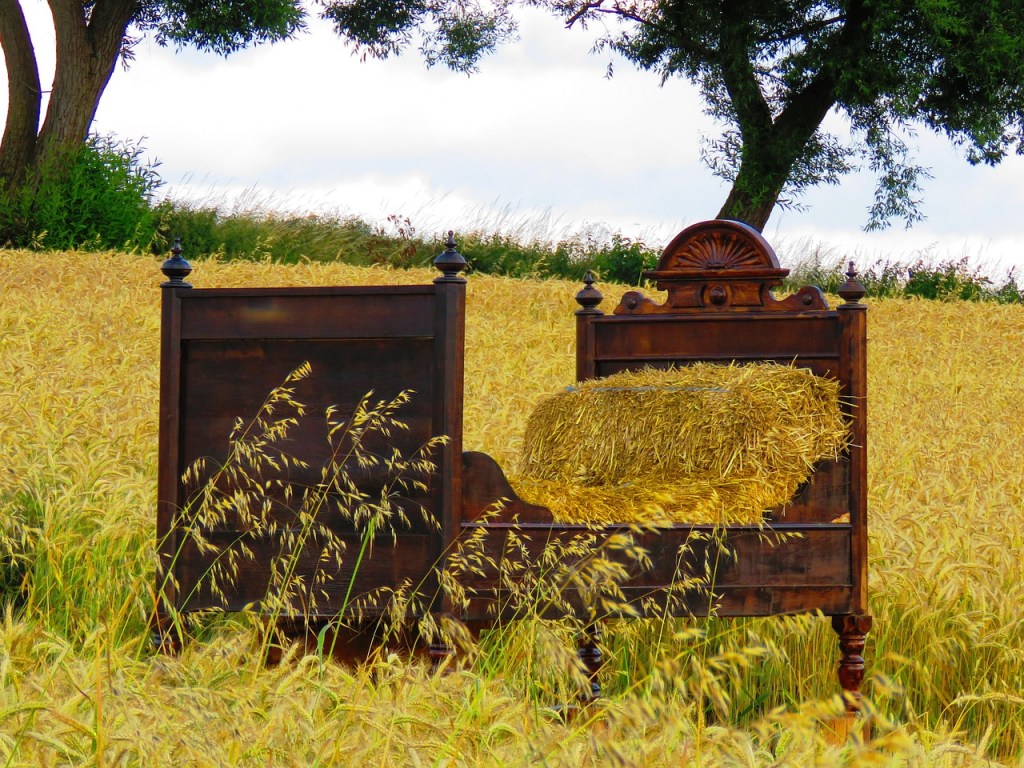I’m back with an attempt to dispel two common myths about sleeping conditions in the Middle Ages. Some people think that everyone slept on straw on the floor, as you may do in a stable. Others imagine everyone sleeping on mattresses, albeit of a more, ahem, organic variety than we’re used to nowadays. Both of these are wrong, as Alice Twain explains on Quora.
Straw Matting
When we think of reeds on the floor, we tend to imagine something similar to what is done in stables, whose floor is covered with straw to make it more comfortable for the animals.
In medieval houses, the flooring was very different. The floor was covered with several layers that were used to insulate and keep the house warmer in winter.
First, the floor was consolidated (if it was a ground floor room with an earth floor) by adding materials that made it harder, almost like concrete. Higher up the floors were made of wood, bricks, or stone.
On this bottom layer, people scattered perfumed herbs that were changed at least yearly. These herbs kept the rooms more fragrant while also keeping insects and other pests away.
Straw or other materials were tied in tight bundles and laid on the floor in an orderly way so that they created a relatively thick insulating and soft layer.
On top of the bundles, there was a layer of tightly woven mats. The rich could also afford to place carpets on the mats. The mats could be swept daily and were regularly taken out and shaken. While the mats were removed, people would add more fragrant herbs, substitute any bundle that was too damaged, or rearrange the bundles.
The term “threshold” actually comes from the fact it prevented the threshed wheat from moving outside the house.
Earthen Floors
You should also keep in mind that this matting was placed on earthen floors. These were traditionally used in Medieval houses along with wooden ones (a practice that lasted for centuries). People often used wood ash and water to harden the floor, making a sort of lime/clay mixture. Later, floors were beaten earth mixed with linseed oil that hardened to the point they could be waxed and polished. They were virtually indistinguishable from linoleum. Such earthen floors could last for centuries.
Some added a wooden floor on top of that, but it was often a floating one. Wooden floors were more expensive and, amazingly enough, were often “earthed” or covered with a layer of puddled soil.
Upper-class accommodation usually had stone floors and more insulation on top because they could afford it.
So, now you know where your knight slept at night. Happy writing!






Reminds me of the tatami mats in Japanese homes. Glad you and your wife survived the shots–it will be worth it in the end.
Thanks! I wasn’t worried about survival, to be honest; just side effects 🙂
I had the Pfizer vaccine – horrendously sore arm with the first and general malaise for a day or two with the second. It sounds like your immune response was pretty fierce, but it shows the vaccine worked.was working. Glad you are recovered!
Thank you, Noelle! It’s good to be back on my feet 🙂
Threshold… That makes sense.
Interesting! Thanks.
Yeah, it was one of those “aha!” moments for me, too 🙂
Great post. My first Moderna shot made me sick for two days. My second Moderna put me in the ER. Would I do it again? Oh yes. The benefits outweigh the body’s response.
Yikes! I thought Moderna was supposed to be the “lightest” of them all!